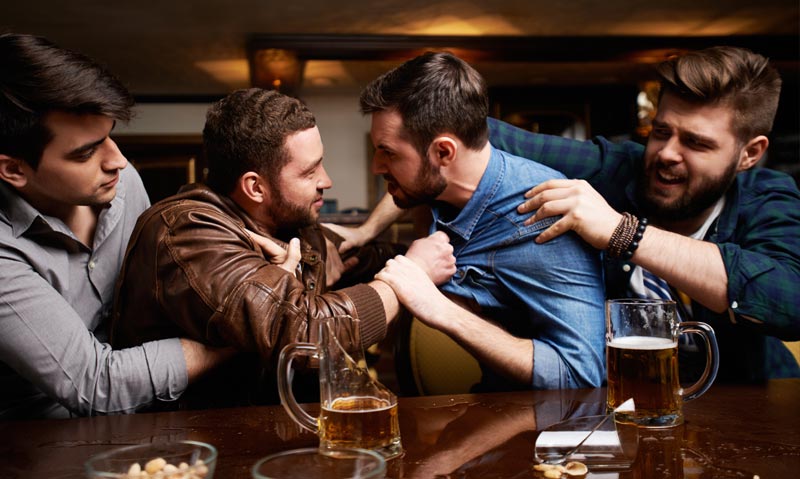ALCOHOL-related presentations are taking up an inordinate amount of emergency department resources, new research shows, as experts increase their demands for action on alcohol availability, pricing and advertising.
Research published in the MJA, based on a snapshot survey of more than 100 emergency departments (EDs) in Australia and New Zealand at 2 am on Saturday 14 December 2013, found that 14% of presentations were alcohol-related. (1)
At 10 hospitals, alcohol-related cases made up more than a third of presentations.
EDs participating in the survey were asked to provide data on patients presenting due to intoxication, injury resulting from their own or someone else’s drinking, and medical conditions linked to alcohol such as alcoholic liver disease and alcoholic cardiomyopathy.
The results revealed that the prevalence of alcohol-related presentations was highest in the Northern Territory (38%), followed by Western Australia (21%).
The authors wrote that the prevalence revealed by the survey indicated that previous research had underestimated the amount of alcohol-related harm presenting to EDs, and called for a national approach to tackling alcohol abuse.
“Evidence-based alcohol policies … are now more available than ever before”, they wrote.
Michael Thorn, chief executive of the Foundation for Alcohol Research and Education (FARE) agreed, saying addressing the price, availability and marketing of alcohol was crucial.
Evidence-based policies included stopping the service of alcohol at pubs and clubs at 3 am, banning alcohol ads on television before 8 pm and ending alcohol industry sponsorship of major cultural and sporting events, Mr Thorn told MJA InSight.
“There’s no evidence public awareness campaigns change behaviour in the face of the barrage of advertising from the alcohol industry — it’s pissing into the wind”, he told MJA InSight. “TV awareness campaigns appeal to mum and dad voters but not to young people.”
Reassuringly, the 2013 National Drug Strategy Household Survey showed an increase in the proportion of 12‒17-year-olds abstaining from alcohol, from 64% to 72% between 2010 and 2013. It also showed a rise in the age at which adolescents started drinking, from 14.4 years in 1998 to 15.7 years in 2013. (2)
Mr Thorn said these figures were probably due to parents taking greater responsibility for their children’s drinking as they heeded the medical community’s warnings that drinking is toxic to the developing adolescent brain.
However, he said: “Teenagers are not the people choking up ED on a Saturday night — more needs to be done about the 18‒35-year-olds”.
Dr Melissa Kang, senior lecturer in the department of general practice at the University of Sydney, told MJA InSight that in addition to other measures, parents had a role to play in changing drinking culture.
“Parental disapproval — not in the rigid sense but where parents explain their concerns about alcohol use and misuse to their adolescent children, do not supply alcohol to them if underage and role-model moderate drinking behaviour — is very likely to be effective for many young people”, she said.
In an MJA editorial, Dr Kang wrote about the dangers of viewing young adults’ health issues through a medical lens, while failing to understand why they engage in alcohol misuse in the first place. (3)
Professor Gordian Fulde, director of the ED at Sydney’s St Vincent's Hospital, applauded the work of FARE on evidence-based alcohol policy.
“The problem is the Australian culture has problem-drinking in its genome”, he told MJA InSight.
“Prohibition definitely isn’t the answer; raising the cost of alcohol does work, but in the end, we have to get through to young people — particularly young men — that they don’t need to get wasted to have a good time.”
Professor Fulde said there was evidence to support a recommendation by the Australian College for Emergency Medicine for emergency physicians to conduct brief interventions with patients presenting with alcohol-related injuries. (4)
“The doctor asks a few informal questions like ‘what do you think about the amount of alcohol you’re drinking?’ Evidence suggests this is quite effective compared with a 20-minute full consult — you’ve got the patients at a vulnerable time when they may be more willing to consider lifestyle changes”, Professor Fulde said.
The AMA is also calling for a coordinated national response to excessive alcohol consumption. (5)
1. MJA 2014; 201: 584-587
2. AIHW 2014; Media release 17 July
3. MJA 2014; 201: 262-263
4. ACEM 2014; Alcohol Harm in Emergency Departments Project
5. MJA InSight 2014; Brian Owler: Alcohol alarm, Online 10 November
(Photo: mediaphotos / iStock)

 more_vert
more_vert
I’m old fashioned, and I’d shut the pubs and clubs at 11pm Friday and Saturday nights and 9pm the rest of the week. I’d also have the police arrest people for public drunkenness and creating a disturbance.
However, some allowance would need to be made for proper restaurants serving other than token meals to have more flexibility during the week nights. There is a difference between drinking to get drunk and having appropriate drinks over a meal.